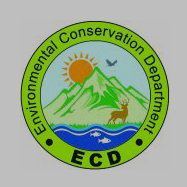
Scoping is a process for determining the scope of studies of EIA type project including e.g. the data that need to be collected and analyzed to assess the potential adverse impacts of a project. As the result of Scoping, a Terms of Reference (ToR) will be developed for preparation of the EIA report.
Project Proponent must submit a Scoping report and TOR together with the submission form to ECD, then ECD will review all contents of the submitted documents whether those materials satisfy all requirements set out in EIA Procedure.
SUBMISSION FORM OF SCOPING REPORT AND TERMS OF REFERENCE (MS-Word **.kb)
A typical Scoping report shall be prepared in English or Myanmar language, which includes (see also Article 51 of EIA Procedure):
| a) Executive Summary
b) Context of the Project c) Overview of the Policy, Legal and Institutional Framework d) Project Description and Alternatives e) Description of the Environment together with maps in proper scale indicating all relevant features, images, aerial photos and satellite images f) Key Potential Environmental Impacts and Mitigation Measures g) Public Consultation and Disclosure h) Conclusions and Recommendations |
The Scoping shall meet the following conditions (See also Article 49 of EIA Procedure):
| a) To define the study area, area of influence, time boundaries, Project phases, and potential stakeholders;
b) To start the process of understanding the applicable regulations and standards, and their context for Project design and completion of the EIA; c) To make a provisional identification of Environmental Impacts, focusing in particular on the environmental, social and health issues that need to be addressed in subsequent EIA studies; d) To provide an indication of the depth and breadth of the subsequent EIA investigations including what baseline data and information are required, what further studies and investigations must be carried out, and how such data collection, studies and investigations shall be undertaken; e) To provide an opportunity for consultants, relevant authorities, project developers, and interested and affected parties to express their views and concerns regarding the proposal before an EIA proceeds; f) To enable an efficient and comprehensive assessment process that saves time, resources, and costs and avoids delays; and g) To identify potentially affected communities and other stakeholders with an interest in the Project. |
In addition, a public consultation meeting shall be held by the Project Proponent as well as a public participation to enhance socialization of the project (See also Article 50 of EIA Procedure):
| a) To disclose information about the proposed Project to the public and civil society through posting on the Project or Project Proponent’s website(s) and local media, including by means of the prominent posting of legible sign boards and advertising boards at the Project site which are visible to the public; and
b) To arrange the required complement of consultation meetings as advised by the Ministry, with local communities, potential PAPs, local authorities, community based organizations, and civil society, and provide appropriate and timely explanations in press conferences and media interviews. |
